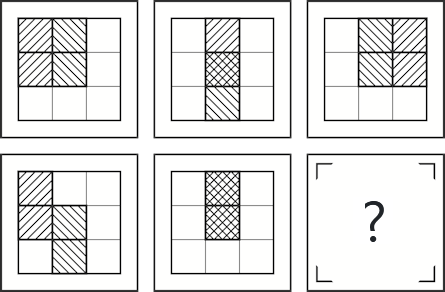There are 3 sections in the GRE test: the Analytical Writing, Verbal Reasoning and Quantitative Reasoning Section.
Most often than not, schools and scholarship bodies (especially in the U.S) that list GRE scores as one of the criteria for award or admission consideration usually focus on the Verbal Reasoning and Quantitative Reasoning sections.
Each one of these two sections is graded within a final score range of 130 and 170. This means the lowest score a test taker can have on either of these 2 sections is 130 and the maximum obtainable score is 170.
If your score recipient – school or scholarship body – is big on these scores, then you will do well to get all the information you can possibly get before the test day.
The focus of this article, however, is the Quantitative Reasoning section. If you’ve been wondering how to answer GRE quantitative questions, you are in the right place.
The quantitative section is basically a test of your math skills. Most of the questions in this section are high school math.
But don’t be quick to relax just yet. You must understand that the examiners design the GRE math questions to primarily test your problem-solving and critical-thinking skills. It’s not just about how much high school math you have learned over the years. It’s how you can apply it to real world problems.
Of course, the closer you are to 170 the higher the chances of getting your dream scholarship or admission.
If you are really keen on working towards a score that’s as close to the maximum 170 as possible, then you should pay attention to the tips we’ll be sharing in this article.
Most importantly, an effective way to make your dreams come true is to include them while handling the practice exercises.
READ: All You Need to Know About GRE
Content of Quantitative Section
Before learning how to answer GRE quantitative questions, you need to know the content of that section.
The Quantitative section will appear twice on the test day with questions from the following aspects of maths:
Arithmetic: numbers, integers, ration, root etc.
Geometry: Area, volume, and perimeter
Algebra: Linear and quadratic equations – polynomials
Data analysis: Mean, median, mode, charts etc.
Guidelines for Answering GRE Quantitative Questions
The following are tips peculiar to the various kinds of questions you’ll find in the Quantitative section. They will guide you on how to answer GRE quantitative questions.
Tips for Acing the Arithmetic Questions
Practicing and getting familiar with decimals, percentage, probability, and ratios become easier when you have the right prep book.
Getting a firm grip on the number family is essential to answering arithmetic questions correctly. It includes positive, negative, prime, odd, and even numbers
You stand a better chance of getting arithmetic questions right if you apply the rules of logical reasoning as opposed to writing and cramming the formulas.
In practicing arithmetic questions, start with the simple questions before you proceed to the difficult ones.
Be patient! One of the easiest ways to make silly mistakes that can mess up your score is to rush through and not pay attention to little detail.
Tips for Acing the Algebra Questions
Well, when it comes to GRE, algebra is literally being able to manipulate numbers and simple mathematical expressions and equations.
You are better off dealing with issues bordering on algebra questions using a paper and a pencil, rather than getting all the work done with brainpower. This way, you can eliminate the chances of getting confused and making silly and costly mistakes.
Nothing gets test takers into trouble while solving algebra questions than the common “+” and “-” signs. You can become a master at changing the signs correctly if you devote your time to continuous practice having had a firm grip of the various concepts.
Tips for Acing Questions on Geometry
Get started with mastering planar geometry which involves angles, shapes, and lines.
Memorizing formulas for the basic operations is also a good way to get your game on and deal with geometry questions in the shortest time possible.
While you don’t have to make perfect lines and curves, one of the easiest ways to solving problems on geometry is to sketch diagrams to interpret and solve the questions.
Tips for Acing Questions on Data Analysis
Questions on data analysis are statistical in nature. They include graphs, charts, tables, issues on mean, median, and mode, as well as frequency distributions.
It is very important that you keep an eye on units of measurements, magnitude orders, and graph axes to avoid errors in conversion.
The first step to handling this type of questions is to scan through the given data for a basic understanding of the case so that your attention is focused on the requisite conditions for answering the corresponding questions.
Practice makes perfect….scores!
READ: Should I Take GMAT or GRE for My MBA Admission?
Finally…
We can’t overemphasize the importance of giving ample time to practicing. It will help you master the art of answering the questions correctly and within the given time.
More so, you can increase the scope of your practice questions to include the types of questions we have just shown you. Simply get your hands on as many sample questions as you can.
We also recommend you keep a record of difficult questions and spend time practicing them. Like we mentioned earlier, having a scratch paper with you on the test day. It saves you from making a lot of errors. It also relieves you of the stress of loading your head with all sorts during the test.
To wrap this up, ensure you eat healthy meals. Also, exercise regularly to keep your mind and brain alert and sharp.
It’s worth the effort, don’t you think?
And just in case you know someone else who would be taking the GRE test soon, be a part of their success story by sharing this article with them right away!
To your success.


